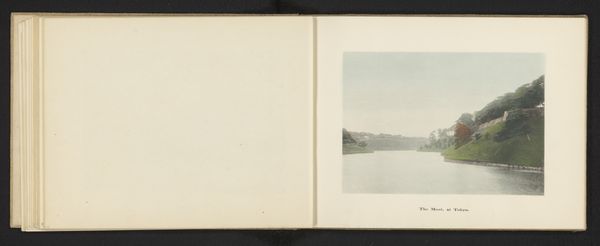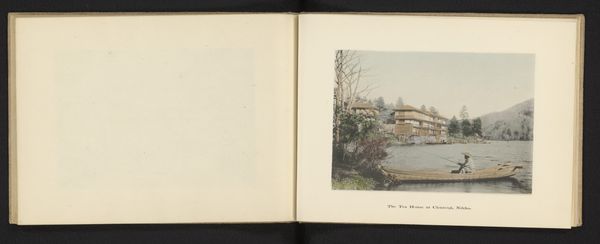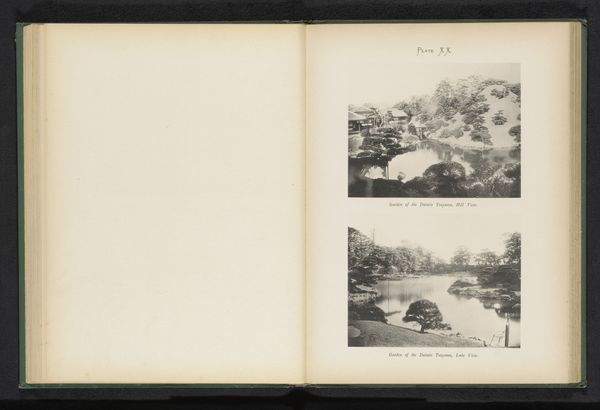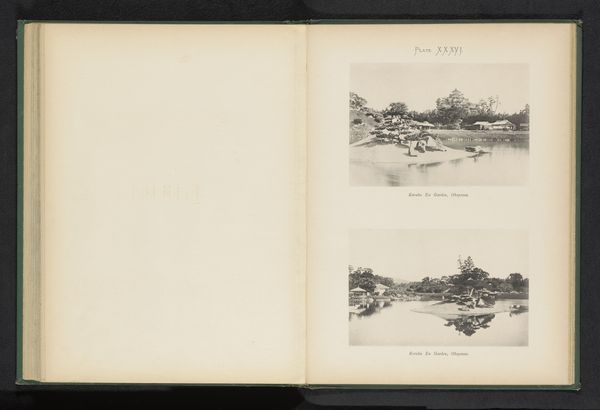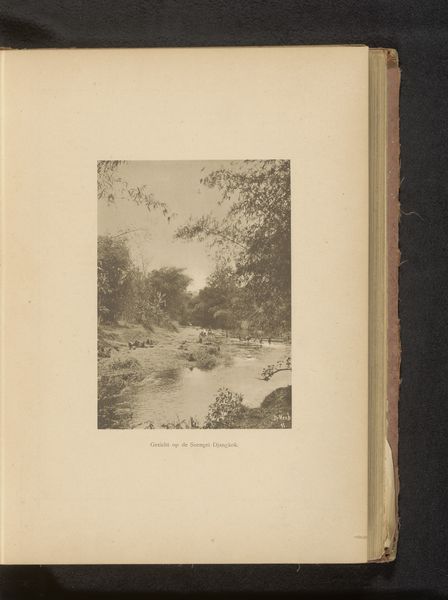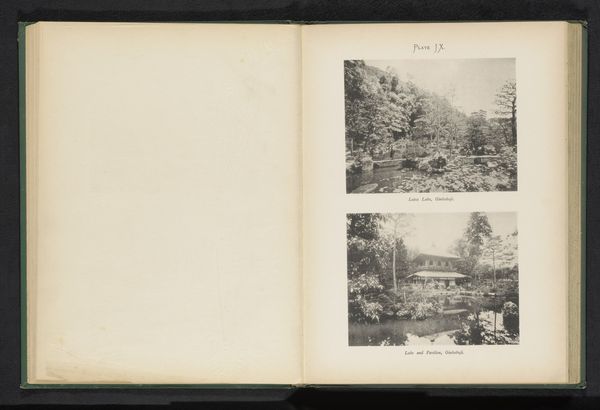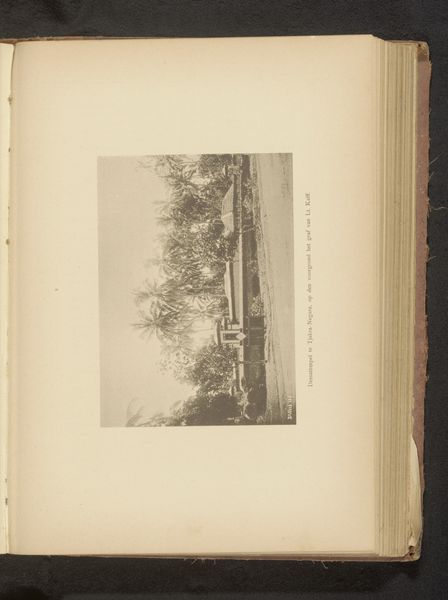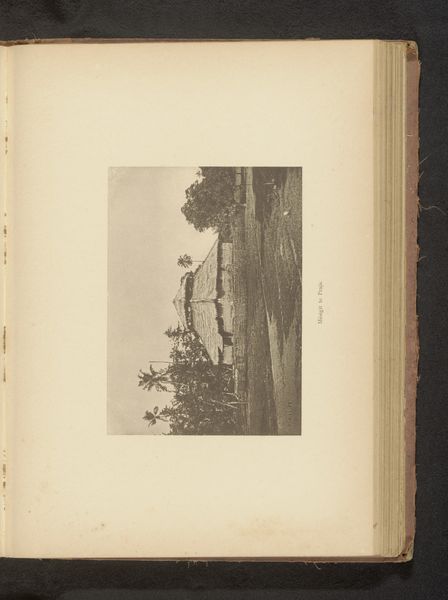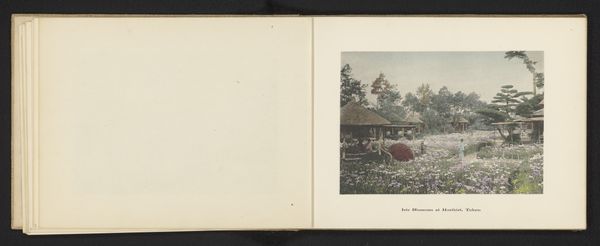
Gezicht op vermoedelijk een heiligdom aan het water in Yokohama c. 1895 - 1905
0:00
0:00
albumen-print, photography, albumen-print
#
albumen-print
#
landscape
#
photography
#
albumen-print
Dimensions: height 105 mm, width 151 mm
Copyright: Rijks Museum: Open Domain
Editor: We're looking at "Gezicht op vermoedelijk een heiligdom aan het water in Yokohama," an albumen print photograph created around 1895-1905 by Kōzaburō Tamamura. It's part of a bound album, giving it an intimate, almost scrapbook-like feel. What I find most interesting is its quiet, peaceful quality, almost like a postcard sent from another era. What strikes you about this image? Curator: What immediately captures my attention is how this serene image functions within the complex history of Orientalism and Japonisme. On the surface, it’s a picturesque landscape of a suspected shrine in Yokohama. But consider the period: Western interest in Japan was exploding, and with it, a market for curated, often romanticized views of Japanese life and landscapes. Who was the intended audience for these albums, and what ideas about Japan were they consuming? Editor: So, it's less about capturing objective reality and more about shaping a particular Western perception? Curator: Precisely. Tamamura, while Japanese himself, was very savvy about appealing to Western tastes. The hand-coloring on the albumen print, the careful composition – it all contributes to a sense of exotic beauty, one that reinforces certain stereotypes while perhaps obscuring other aspects of Japanese society at the time. How does seeing it that way change your perception of the work? Editor: It makes me question my initial impression. That sense of peacefulness, could that have been strategically created for Western viewers? The politics of imagery, as you say, is definitely at play here. It's less a straightforward view and more of a carefully constructed cultural transaction. Curator: Indeed. It invites us to consider how photography, even in seemingly innocuous landscape scenes, can be deeply implicated in broader power dynamics. Editor: This photo really encapsulates how art acts as a cultural exchange with layered meanings. It's something I didn't fully appreciate at first glance.
Comments
No comments
Be the first to comment and join the conversation on the ultimate creative platform.
